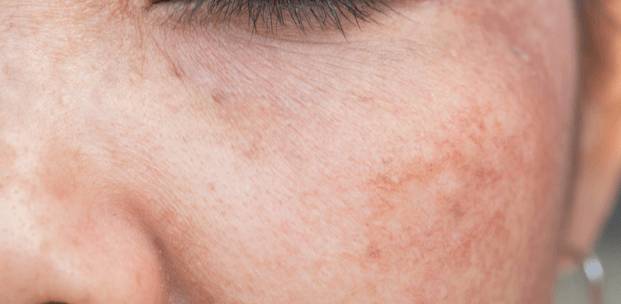What is Melasma(賀爾蒙斑)? - Dr Yeung Ho Hong 楊浩康

Causes and Symptoms of Melasma
Hormonal spots, formally called melasma , are a common skin pigmentation issue marked by irregular, blurry-edged brown or gray-brown patches on the face. Despite “liver” in its name, it’s unrelated to liver function, instead tied to hormonal changes, UV exposure, and various external and internal factors.
Hormonal fluctuations play a key role in melasma’s formation. In women, pregnancy, oral contraceptives, or hormone replacement therapy elevate estrogen and progesterone, triggering melanocyte proliferation and overactivity, forming facial spots. Known as “pregnancy mask,” it’s common during or after pregnancy. Beyond hormones, UV or sunlight exposure accelerates melanin deposition, worsening patch formation and spread.
Other factors include phototoxic drugs, anti-epileptics, thyroid dysfunction, genetics, stress, and improper cosmetics use, interacting to complicate melasma. About 90% of cases affect women; men are less commonly impacted.
Clinically, melasma appears on sun-exposed areas—cheeks, forehead, eyelids, nose, and chin—with vague borders and colors ranging from light to dark brown. Diagnosis involves medical history, family history, and skin assessment, sometimes using a Wood’s lamp for differentiation.
Treatment often starts with topical creams. Hydroquinone inhibits melanin production as a potent whitener, while tretinoin boosts skin renewal, both fading spots. A compound cream of Hydroquinone, tretinoin, and steroids is common, suppressing melanin while promoting peeling and regeneration for better results.
Besides topicals, laser therapy and fruit acid peels are widely used. Lasers target patches, destroying melanocytes and encouraging regeneration, but risks include inflammation or “rebound darkening,” requiring expert oversight. Fruit acid peels exfoliate aged keratin and reorganize collagen to improve pigmentation, though improper use may cause overstimulation or pigment deposition.
Since single treatments may not suit all, multimodal approaches—combining creams, lasers, peels, and preventive care—are often recommended. Strict sun protection is essential: broad-spectrum sunscreen, hats, and avoiding peak UV hours prevent new spots and worsening of treated areas.
Good daily skincare aids prevention and treatment. Regular cleansing, moisturizing, and gentle exfoliation enhance skin condition, optimizing treatment efficacy. For sensitive skin, mild products and avoiding irritants reduce side effects and recurrence.
Stress and anxiety can indirectly affect hormonal balance and melanin production. Relaxation, routine adjustments, or counseling help manage melasma. Overall, it requires comprehensive prevention and long-term, scientific management for optimal outcomes.
In summary, melasma is a prevalent pigmentation disorder driven by hormonal shifts, UV exposure, and multiple factors, mainly affecting women’s facial symmetry. Topical creams, lasers, and peels offer varied benefits and challenges, tailored by doctors to individual needs, with sun protection and skincare emphasized.
